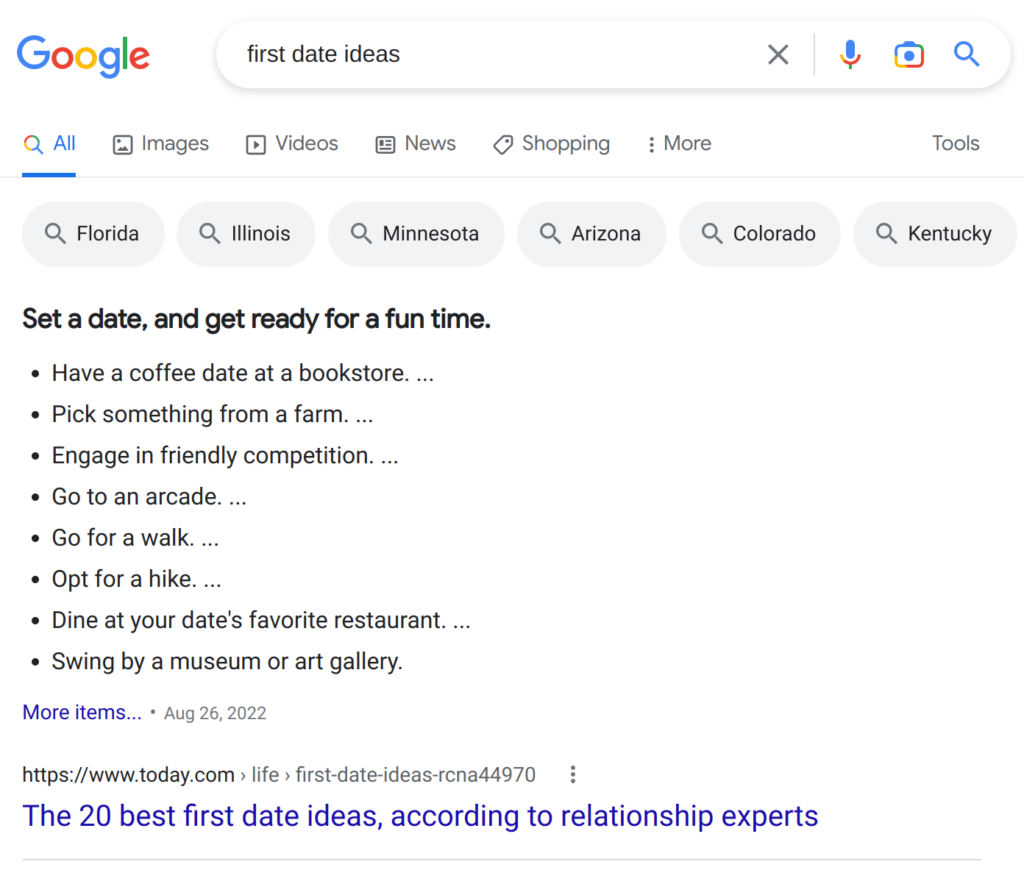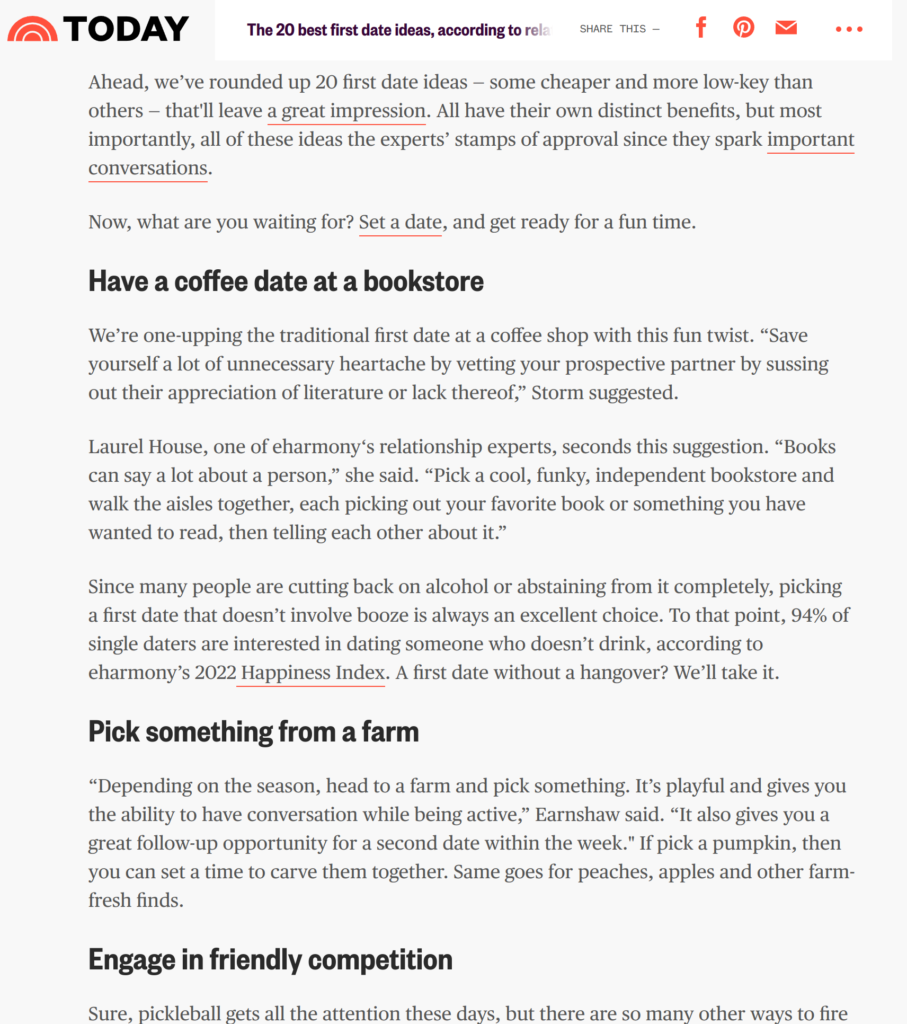Google search result pages are the lifeblood of bloggers. In order to rank well, have your articles displayed attractively on the search result pages, and even earn the coveted “featured snippet” positions, it’s important to follow some best practices about the maximum length you should make your titles, headers, and paragraph snippet targets.
1. Article Titles (60 characters)
On Google’s desktop search pages, the display limit is frequently 600 pixels which equals about 50-60 characters. However, the majority of searches (over 60%) now come from mobile, and that percentage is growing. On mobile, Google recently increased the limit of displayable titles up to 78 characters.
In order to maximize the chance that Google displays your full article title on both desktop and mobile search result pages, titles should be no more than 60 characters.
If you want to be especially conservative, keep your titles to a maximum of 50 characters (for comparison, the title of this article is 46 characters).
On the other hand, if you only care about mobile searches, I would still not use titles longer than 70 characters whenever possible. The reason is that even though Google can accommodate 78 character titles on mobile without truncation, Google is a very data-driven company and longer titles may force them to show fewer search results which potentially decreases the probability of a searcher finding what they are looking for. However, if you are creating a very specific and informational title that almost guarantees that anyone who clicks on it will find what they are looking for, then Google may reward you.
2. Featured snippets (320 characters)
A featured snippet is a short section of text taken from a web page and shown directly at the top of a Google search results page, as shown in the screenshot below.

There are four types of featured snippets: (1) paragraph snippets (as shown above), (2) list snippets, (3) table snippets, and (4) video snippets. Paragraph snippets are the most common.
In the example from the screenshot above, the featured snippet is 313 characters if you don’t include the published date or 324 characters if you do. However, most people who have systematically studied snippets report that paragraph-style snippets are almost never over 320 characters (including the publication date). Unfortunately, Google doesn’t tell us what the max length of a snippet is so estimates are the best we can do. Income School, for example, reports an average paragraph-style snippet length of 267 characters with results rarely over 300. That’s extremely consistent with the next random query I ran to get a featured snippet (266 characters, shown below):

So what is the maximum featured snippet length?
In general, Google’s featured snippets are no longer than 320 characters, with most paragraph-style featured snippets being 150-300 characters. Average snippet length is approximately 267 characters.
See what I did there? I made a 200-character bolded paragraph that is perfectly set up for Google to use as a featured snippet to answer the question of maximum featured snippet length. The current featured snippet that Google has to answer the question provides the right answer (320 characters) but for the wrong reason (it incorrectly conflates “snippet” with “meta description”) so we’ll see if my snippet can beat it or not.
Additional Tips for Writing Successful Paragraph Snippets:
- Make the answer paragraph stand alone by not starting it with ambiguous pronouns like “it” or “they”. Instead, restate the subject of the sentence even if it seems a little redundant in the context of the article.
- Don’t start the paragraph with “yes” or “no” since most questions can be asked from either side and your snippet should ideally rank for both. (Example: “Do deviled eggs smell bad?” and “Do deviled eggs smell good?” can both be answered by the same snippet if the snippet does not start with “yes” or “no”.)
- Bold the paragraph that you want Google to choose as a featured snippet.
3. List headings (53 characters)
We just talked about paragraph-style featured snippets, but Google also uses list-style featured snippets, as shown in the screenshot below.

Most often, these lists are not pulled from actual ordered or unordered html lists inside a source article but rather the sequence of H2 headers inside an article. For example, in the today.com article that the list snippet above was pulled from, we can see the headers that were used to generate the snippet:

In that example, the longest header displayed as a list item (“Dine at your date’s favorite restaurant.”) is 40 characters. However, is there a maximum character length for article headers to be included in a list-style featured snippet?
To be used in a featured list snippet on Google, each of an article’s headers should typically be no longer than 53 characters. Longer headers of 80 characters or more can be used in list snippets, but those snippets are more likely to be shown in 2nd place and less likely to appear in both desktop and mobile searches.
If you do choose to include longer headers, try to make them the last headers in the article rather than the first. That will allow Google to potentially still fit an image next to the first list items in the snippet and then wrap the text of the last one or two list items without truncating them. An example of this is shown in the screenshot below of a mobile search result page.
